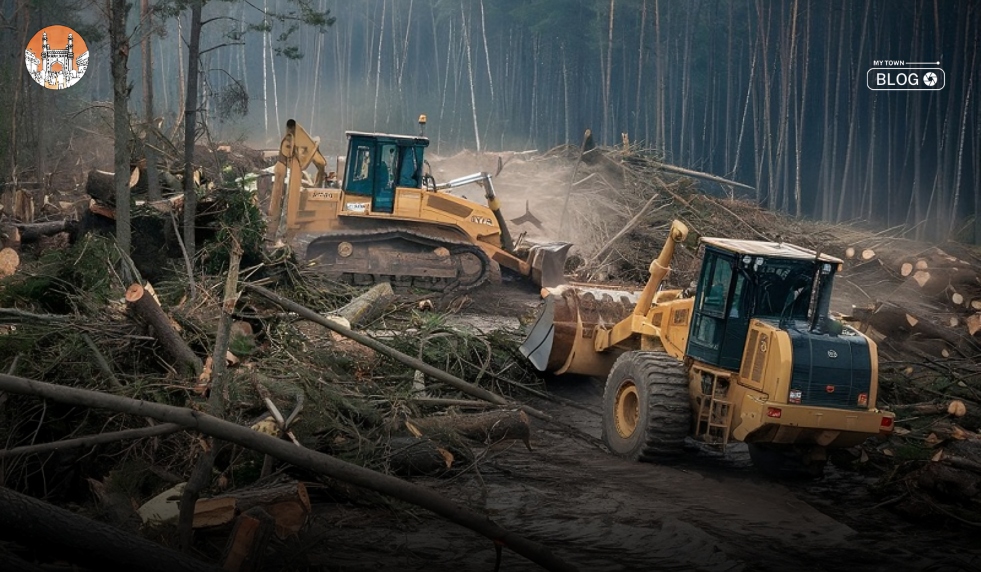The Hyderabad Forest Crisis has emerged as a significant environmental and social issue in recent times. With rapid urban development, deforestation, and land encroachment becoming more prevalent, the natural green cover around Hyderabad is under threat. This article explores the roots of this crisis, the key stakeholders involved, government responses, public reactions, and potential solutions to protect Hyderabad’s forests.
What is the Hyderabad Forest Crisis?
The Hyderabad Forest Crisis refers to the ongoing destruction and degradation of forested land in and around Hyderabad, Telangana. This includes unauthorized encroachments, construction of residential and commercial projects on forest lands, and illegal logging. The crisis has raised major concerns about biodiversity loss, rising temperatures, water scarcity, and urban flooding.
Why is this Happening?
Several factors are contributing to the Hyderabad Forest Crisis:
- Urban Expansion: Hyderabad is one of the fastest-growing cities in India. As the population and real estate demand increase, natural habitats and forest areas are being cleared to make space for housing, roads, and industries.
- Real Estate Pressure: With increasing land values, forest-adjacent areas are being encroached upon by builders and developers, sometimes illegally, in collusion with corrupt officials.
- Lack of Clear Land Records: In many cases, forest lands do not have clear demarcation or updated digital records, making it easier for encroachers to exploit them.
- Infrastructure Projects: Government-led development projects such as highways, flyovers, and metro expansions often result in tree cutting and land acquisition from forest areas.
Who Declared This Crisis?
The forest crisis gained national attention after environmental activists, NGOs, and local citizen groups raised alarms. Notably:
- Forum for Good Governance and Society for Preservation of Environment and Quality of Life (SPEQL) highlighted the illegal encroachments and declining forest cover.
- Telangana State Forest Department released data confirming over 2,000 hectares of forest land have been encroached upon or illegally converted.
- National Green Tribunal (NGT) also intervened and sought reports on unauthorized constructions in forest areas like KBR National Park and Miyapur reserve forests.
Major Affected Forest Areas
- KBR National Park – Facing threat from the Strategic Road Development Program (SRDP).
- Miyapur Forest Area – Reports of illegal construction and dumping.
- Shamirpet and Gachibowli Forests – Rapidly urbanizing, encroachments on eco-sensitive zones.
- Himayat Sagar and Osman Sagar Catchment – Vital forest buffer zones now under pressure from development.
Who Can Support the Cause?
Multiple stakeholders can contribute to addressing the Hyderabad Forest Crisis:
Government Agencies
- Telangana Forest Department – Enforce laws and evict encroachers.
- Greater Hyderabad Municipal Corporation (GHMC) – Ensure city planning respects green zones.
- Revenue and Land Records Department – Update land ownership and forest maps.
Judiciary
- National Green Tribunal (NGT) – Enforce environmental laws.
- High Court of Telangana – Address PILs and stop unlawful constructions.
Environmental NGOs
Can run awareness campaigns and file legal cases to protect forest lands.
Also Read: Sajnekhali Wildlife Sanctuary: Location, Timings, and Entry Details
Media and Public
- Media plays a key role in exposing illegal activities.
- Citizens can support the cause through online petitions, protests, and responsible civic participation.
Public Movements and Protests
Citizens of Hyderabad have shown remarkable unity through:
- #SaveKBRPark Movement – Thousands protested to protect trees in the KBR National Park.
- Tree Tagging Initiatives – Volunteers tagging trees to create public awareness.
- Social Media Campaigns – Online voices are spreading awareness using hashtags like #HyderabadForestCrisis and #SaveOurForests.
What is the Main Purpose Behind the Crisis?
The core motive is economic gain. Builders, developers, and sometimes even government projects target forest land due to:
- Low acquisition cost
- Lack of regulation
- Proximity to high-value urban zones
In some cases, political pressures and vote-bank politics also influence the regularization of unauthorized settlements.
Potential Solutions
- Strict Law Enforcement: Immediate eviction of encroachers and fencing of forest boundaries.
- Technology for Monitoring: Use of satellite mapping and drone surveillance to identify illegal activities.
- Community Forest Protection Committees: Empower local communities to monitor and report forest violations.
- Eco-sensitive Urban Planning: Sustainable city development that incorporates green spaces and preserves natural landscapes.
Conclusion
The Hyderabad Forest Crisis is a wake-up call for both the government and citizens. While urban growth is essential, it should not come at the cost of nature. Forests are not just green patches – they are vital for air quality, climate control, water security, and biodiversity. Unless strict measures are taken now, Hyderabad may face severe environmental consequences in the coming years.
FAQ’s
What is the Hyderabad Forest Crisis?
It refers to the increasing deforestation, land encroachment, and loss of natural forest cover in Hyderabad due to urbanization and illegal activities.
Who reported the Hyderabad Forest Crisis first?
Environmental NGOs and citizens brought the issue to light, later supported by forest department data and NGT actions.
What are the major forest areas affected?
KBR National Park, Miyapur forests, Shamirpet, and Gachibowli are among the worst affected.
How can citizens help?
Citizens can support through awareness campaigns, tree plantation drives, legal petitions, and social media activism.








